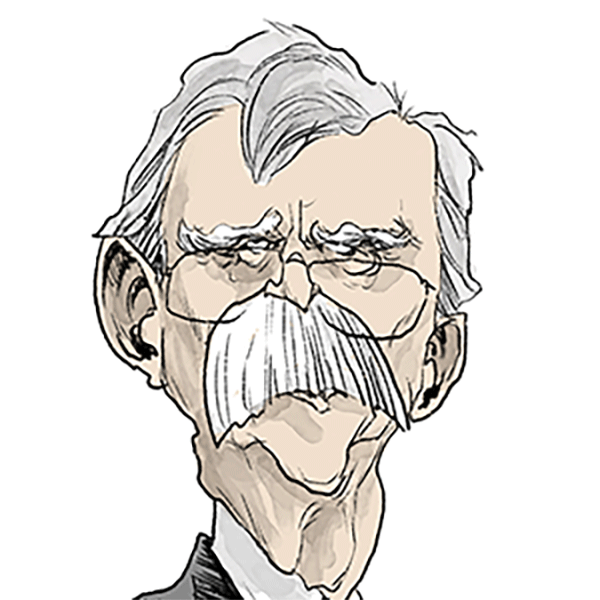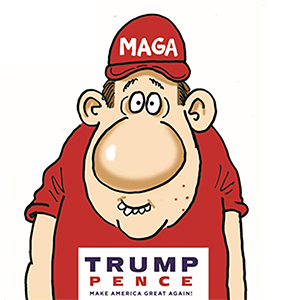Trump signals decision on Venezuela as US military buildup intensifies in Caribbean
Published in News & Features
President Donald Trump said Friday night he has already decided on his next steps toward Venezuela, offering his clearest indication yet that Washington is preparing new military actions against Nicolás Maduro’s government as the United States dramatically expands its presence in the Caribbean.
“I sort of made up my mind,” Trump told reporters when pressed about recent high-level meetings on Venezuela within his administration and the deployment of U.S. forces near the country’s shores. Speaking briefly as he walked toward Air Force One before departing Washington for a weekend trip to Florida, the president declined to elaborate. “I can’t say what it will be,” he added.
Trump’s comments — captured in an audio recording by a reporter traveling with the press pool — came less than an hour after The Washington Post reported that he had met with Secretary of Defense Pete Hegseth and senior Pentagon officials on Friday. According to the paper, the discussions focused on “a series of options” to advance the administration’s strategy against Venezuela, whose leadership U.S. officials increasingly accuse of turning the country into a narco-state.
Those accusations escalated in August, when U.S. Attorney General Pam Bondi doubled the reward for Maduro’s capture to $50 million, calling him “one of the world’s biggest drug traffickers” and alleging he leads the regime-led Soles drug cartel. Bondi cited alleged collaboration between Maduro and criminal groups, including Venezuela’s Tren de Aragua, Mexico’s Sinaloa cartel, and other transnational networks.
A senior U.S. official, speaking anonymously to The Post, said the American forces already positioned in the Caribbean are awaiting orders to “strike and respond” to new operations. The official said Trump prefers to maintain “strategic ambiguity,” withholding clear signals about timing or targets to keep adversaries off balance.
Concerns about a looming escalation intensified Friday after Doral-based U.S. Southern Command posted a video on X showing the destruction of another vessel in the Caribbean, saying four alleged drug traffickers on board had been killed. Since Thursday, the administration has begun referring to the mission as Operation Southern Spear — a campaign Hegseth says is designed to block narcotics shipments bound for the United States.
Even ahead of the announcement, the U.S. Navy had already surged unprecedented firepower into the region. The USS Gerald R. Ford, the world’s largest and most advanced aircraft carrier, entered SOUTHCOM’s area of responsibility this week, expanding what officials describe as the largest U.S. military presence in the Caribbean in decades.
Under Operation Southern Spear, an estimated 15,000 to 16,000 personnel are now operating near Venezuela. Washington describes the mobilization as part of a counter-narcotics effort, while Caracas denounces it as a prelude to regime change and has triggered a nationwide military mobilization in response.
At the center of the buildup is the Ford Carrier Strike Group, which arrived Tuesday. The nuclear-powered carrier — capable of launching more than 75 aircraft — is usually escorted by seven Arleigh Burke-class destroyers, including the USS Bainbridge, USS Mahan, USS Winston S. Churchill, and USS Gravely. The deployment also includes two guided-missile cruisers.
A major amphibious force is also in place. The USS Iwo Jima, USS San Antonio and USS Fort Lauderdale are carrying roughly 4,500 Marines from the 22nd Marine Expeditionary Unit, along with helicopters, Osprey tilt-rotors and landing craft. Live-fire drills near the Venezuelan coast and the presence of the fast-attack submarine USS Newport News further underscore U.S. readiness. Additional assets include Coast Guard cutters, F-35Bs, MQ-9 Reapers, CH-53 helicopters, and P-8 Poseidon patrol aircraft operating from Puerto Rico. A special-operations support vessel, the MV Ocean Trader, is providing logistics and covert-insertion capabilities.
The escalation follows more than 20 U.S. strikes on suspected drug-running boats since September, which have reportedly caused about 80 deaths, including alleged civilian casualties. Although Trump has not authorized land strikes, options under review reportedly include attacks on ports and airstrips tied to trafficking networks.
Venezuela has activated more than 200,000 troops and militia members under “Plan Independencia 200,” reinforcing coastal air defenses — possibly including Russian-made S-300 surface-to-air missile systems — and hardening strategic sites. With U.S. naval forces operating ever closer to Venezuelan waters, analysts warn the risk of miscalculation is rising.
While the deployments are officially framed as part of an anti-narcotics mission, they coincide with growing tensions with Caracas, which is scrambling to reinforce its Russian- and Iranian-backed air defense network amid speculation that U.S. forces may strike targets inside the country.
In recent days, multiple news outlets, including the Miami Herald and The Wall Street Journal, have reported that the administration has identified several Venezuelan military facilities allegedly linked to drug trafficking as potential targets. Regional diplomats quoted in those stories have described the expanding U.S. flotilla as an “armada,” warning that the buildup has raised alarm across Latin America.
Inside Venezuela, the arrival of the Ford has heightened public anxiety. Many residents view the deployment of the carrier — rarely used in counter-drug missions — as a symbolic threshold that could signal the next phase of Trump’s pressure campaign. With U.S. officials suggesting orders could come at any moment, uncertainty is deepening in Caracas and among Venezuela’s neighbors, who are watching closely to see whether Washington’s posture shifts from deterrence to action.
©2025 Miami Herald. Visit miamiherald.com. Distributed by Tribune Content Agency, LLC.







Comments